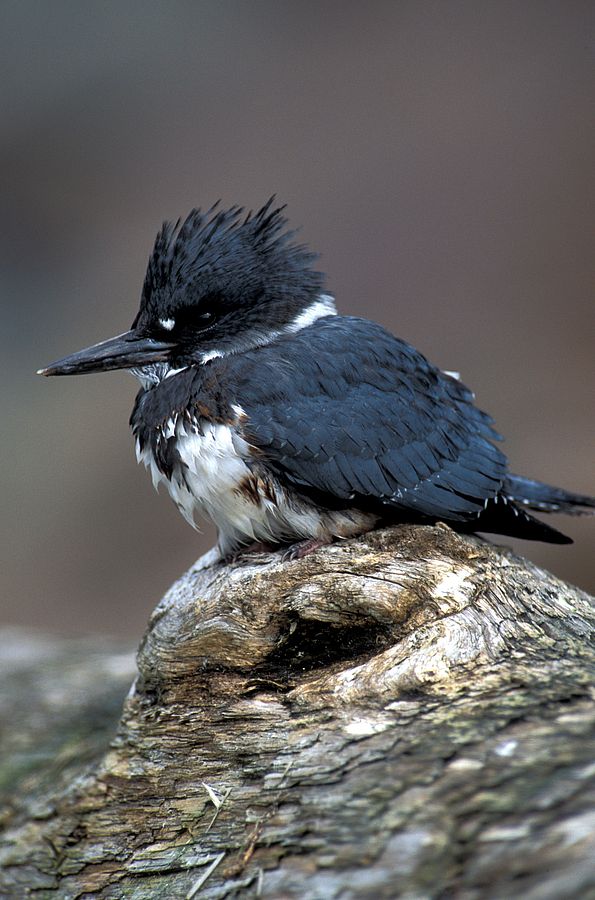Belted Kingfisher – Noisy Guardian of the Water Ways
Article by Ava Steenstrup
A Belted Kingfisher is often heard before it is seen. A loud, rattling call announces it presence. This medium-sized bird with a large, shaggy-crested head and stout, daggerlike bill may be found in almost any waterside habitat, including small streams and ponds, large rivers and lakes, marshes, estuaries, and rocky coastlines. It is one of the few bird species where the female has more colorful markings than the male. The male has a single blue-gray breast band across his white underparts, while the female has a chestnut band and flanks below the gray band.
Belted Kingfishers are solitary and active during the early morning, late afternoon, and early evening. Their diet consists mainly of fish that live in shallow water or swim near the surface. Kingfishers are often seen perched on trees or wires overlooking water, from where they plunge head-first to catch fish in their bills. They also hunt by hovering high over the water and then diving down when they spot a fish. They will also eat aquatic invertebrates, various insects, frogs, salamanders, lizards, snakes, young birds, and occasionally small rodents.
In the breeding season, Belted Kingfishers nest in burrows that they dig into soft earthen banks, usually adjacent to or directly over water. Unlike other perching birds, two of the kingfisher’s toes are fused for much of their length which is useful for digging tunnels. A mated pair take turns carving out a tunnel with their bills and they push the debris out behind them with their feet. At the end of the tunnel, they excavate a nesting chamber where, in total darkness, the female lays her clutch of white eggs. The tunnel slopes upward from the entrance presumably to keep water from flooding the nest chamber.
Belted Kingfishers are migratory in the northern states although many remain through winter and stay in areas where there is open water and they can catch fish. Others migrate south, some as far as Central America and the northern portions of South America. Migratory birds generally arrive on the breeding grounds in March or April and leave on their southerly migration in September through November.
Did you know? Pleistocene fossils of Belted Kingfishers, some as old as 600,000 years, have been found in Virginia, Tennessee, Florida, and Texas. The oldest known fossil recorded for the kingfisher genus is about 2 million years old!

